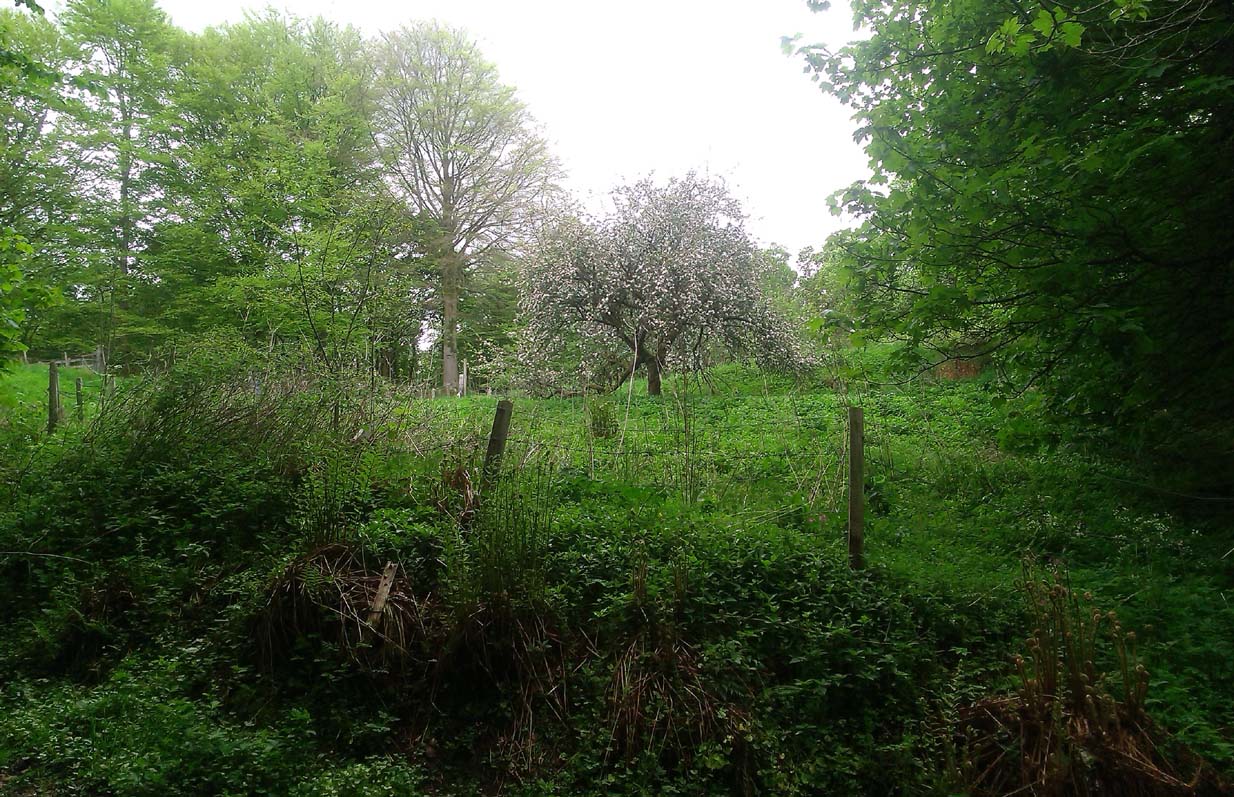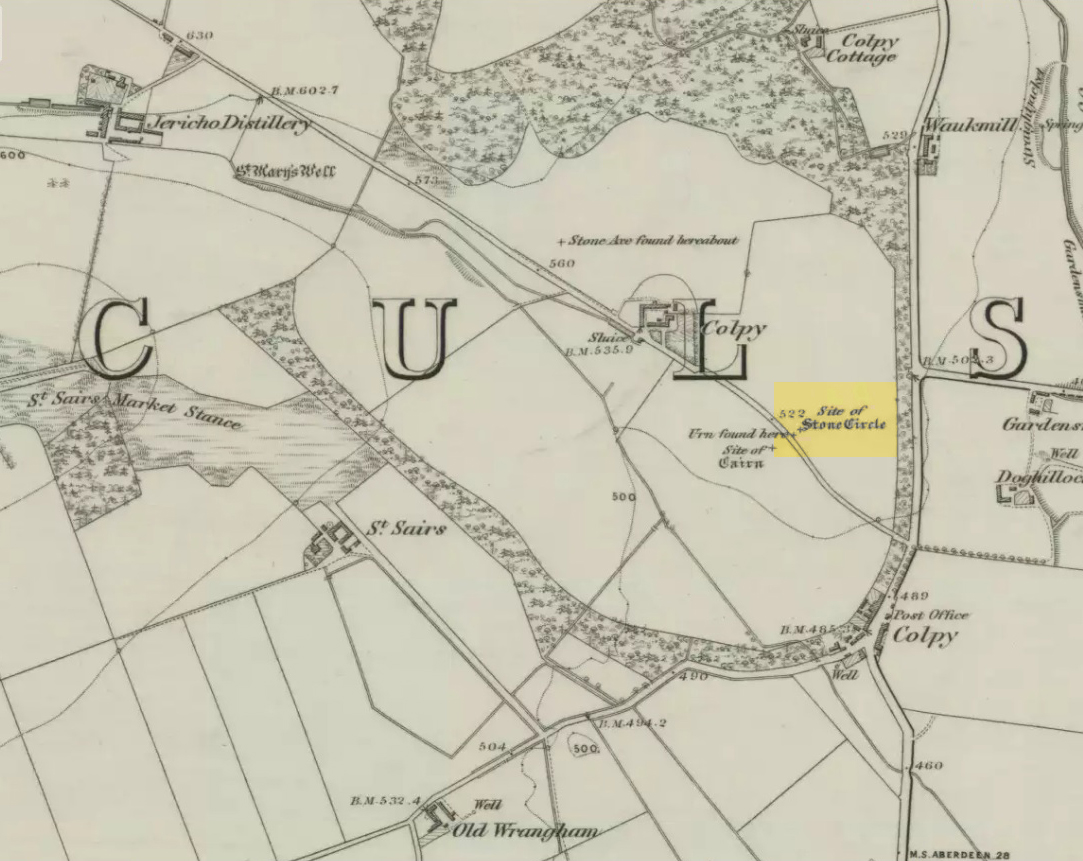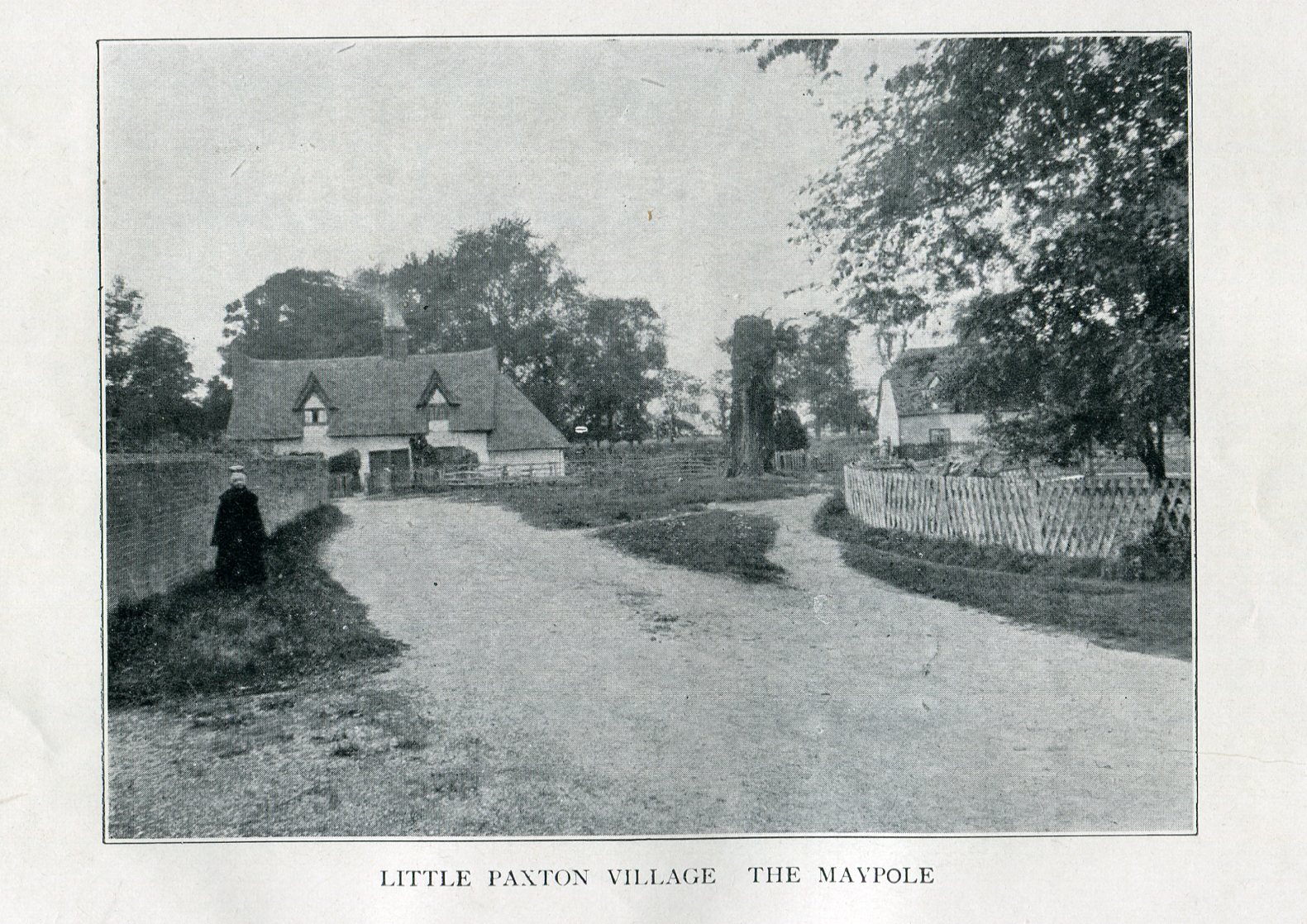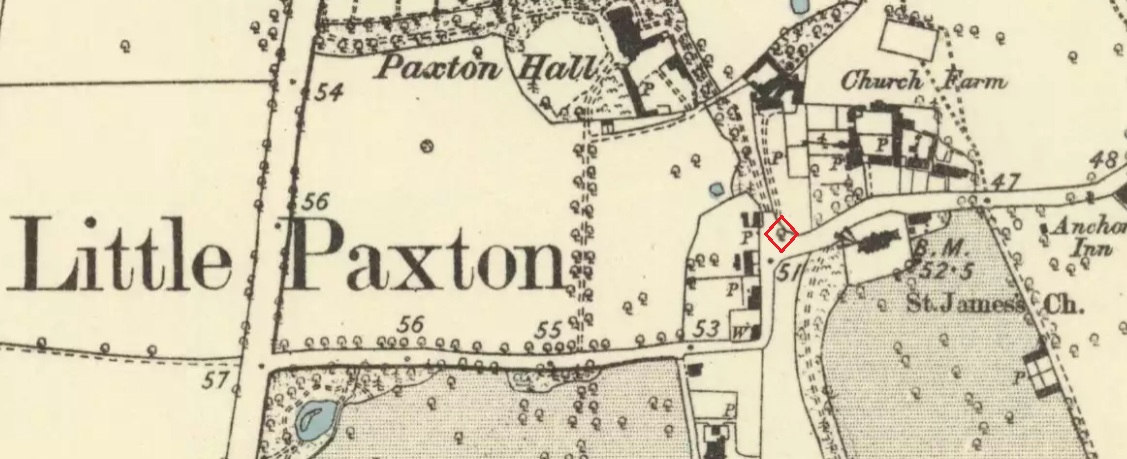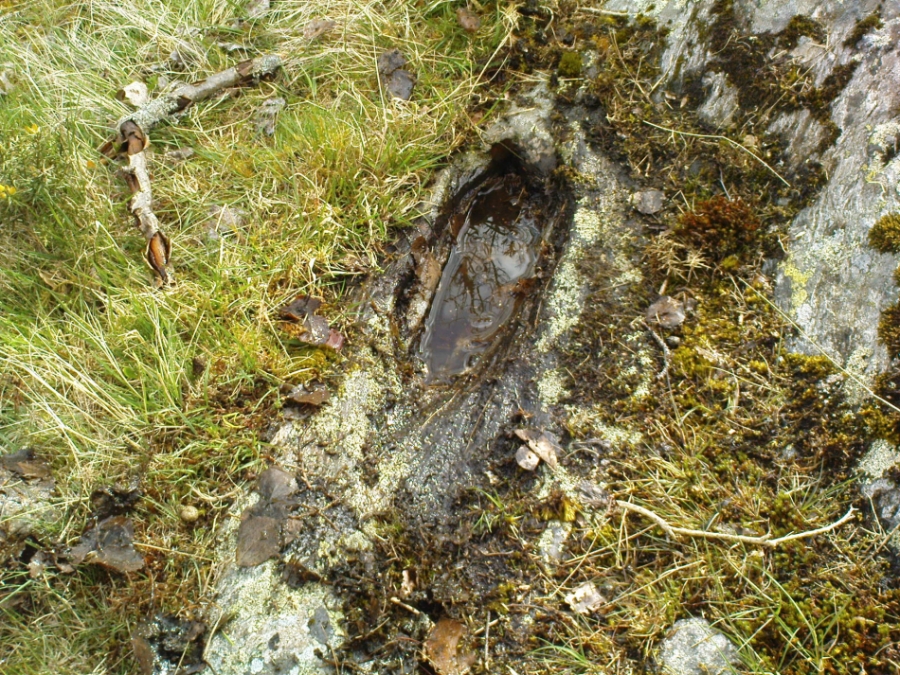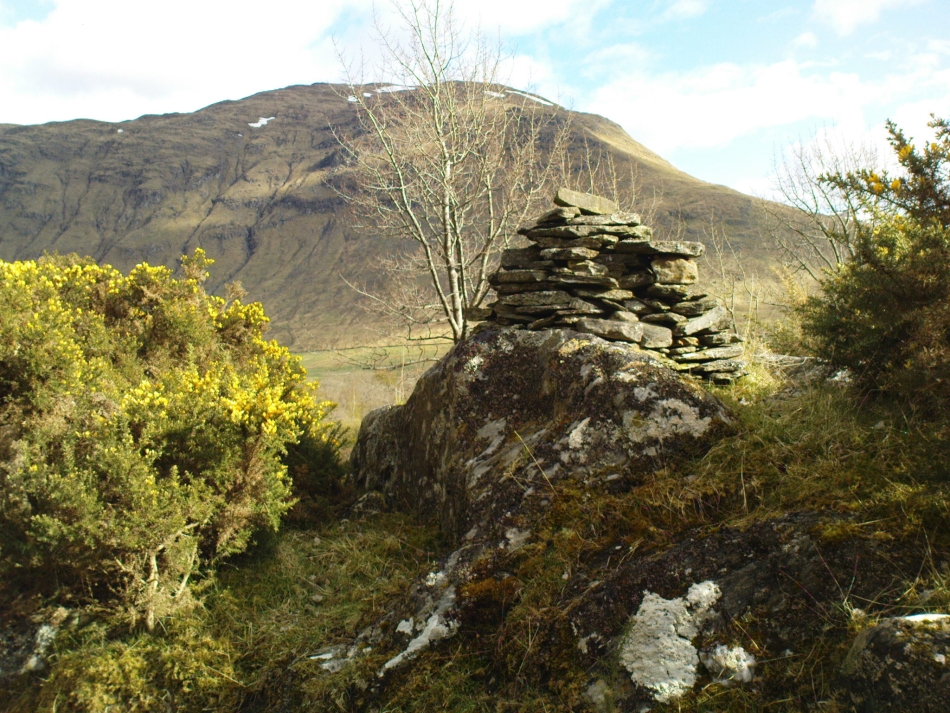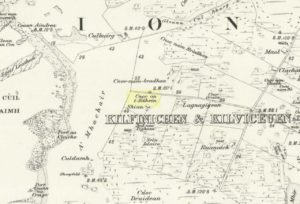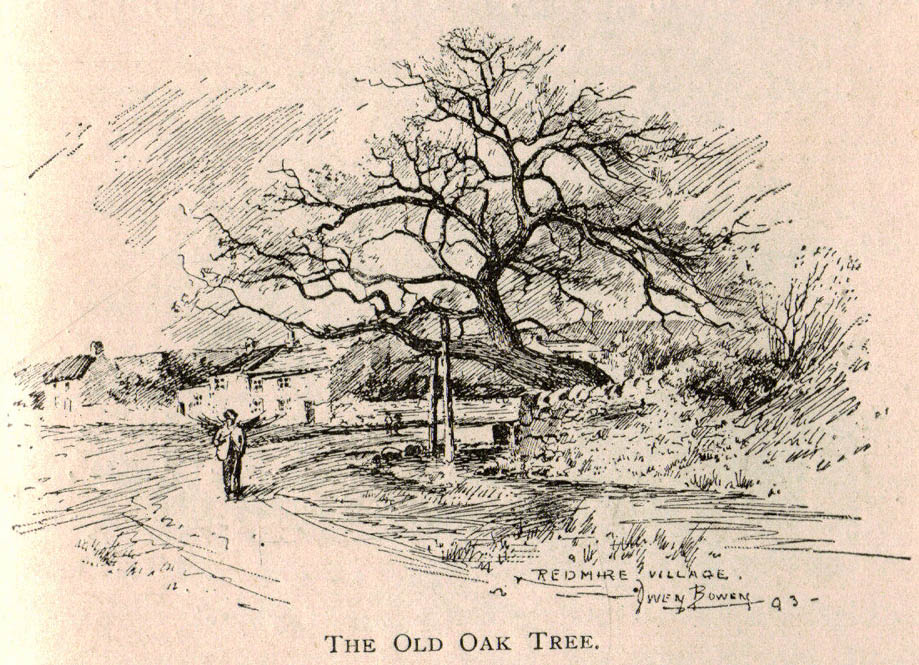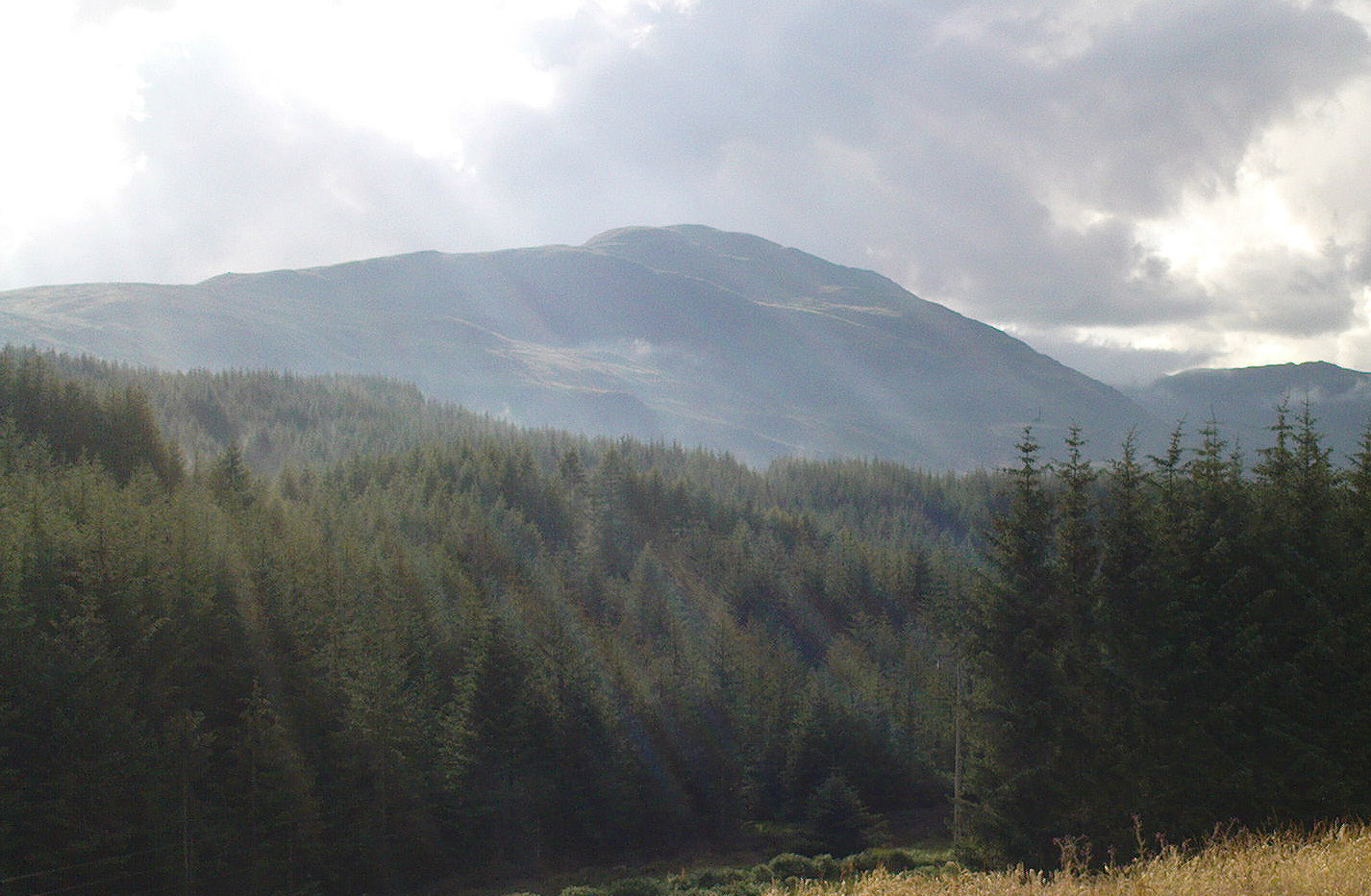Legendary Rock (destroyed): OS Grid Reference – NS 4268 3231
Also Known as:
- Canmore ID 42851
- White Stane
- Witches’ Stone
Archaeology & History
It is difficult to assess the precise nature of this megalithic site, sadly destroyed some two hundred years ago. The Royal Commission thinks it may have been a rocking stone, but the legend said of it indicates it to have been associated with a giant prehistoric cairn, although nothing remains nowadays. The site was mentioned briefly in James Patterson’s (1863) huge work on the townships of Ayrshire, where he described the site as “standing upright” and “being in a field on Lodgehouse Farm,” near the village church.
“It stood on three stones, so high that a man could crawl under. It was blasted in 1819 to build houses. The farmer’s wife, it is said, took some antipathy to it, and would not give her husband rest until he consented to have it removed. A person of the name of Jamieson, and an assistant, were employed to blast it, which was accordingly done. When broken up, it filled twenty-four carts. Such was the feeling of sacrilege occasioned by the removal of the stone, that it was observed the farmer’s wife became blind, and continued so for eight years, when she died. Jamieson, who blasted it, never did well afterwards. He drank and went to ruin.”
Serves them right! Additional lore gained from a local lady in the 1870s has one of those all-too-familiar elements to it, speaking of something more substantive.
Folklore
When Archibald Adamson (1875) wrote his fine work on the history of Kilmarnock and district, folklore elements more typical of the Cailleach—whose legends abound in our more northern climes—seemed to have been attached to this missing site. It is worth telling in full:
“After partaking of refreshments in the village inn, and indulging in a chat with the landlord, I retraced my steps to the highway, and in doing so got into conversation with an old lady who was very loquacious and well versed in the lore of the district. Amongst other things, she informed me that once on a time the church of Craigie had a narrow escape of being destroyed by a witch who had taken umbrage at it. It seems that the hag selected a large stone, and having placed it in her apron, flew with it in the direction of the building with the intention of dropping it upon its roof. Her design, however, was frustrated by the breaking of her apron strings, for, upon nearing the object of her spleen, they gave way, and the stone fell with a crash that shook the earth. This accident seemingly so disheartened the carlin that she abandoned the destructive idea and allowed her burden to lie where it fell. The boulder lay in a field near the churchyard wall, and was known as “The White Stane.” It was long regarded with superstitious awe by many; but the farmer on whose ground it lay being of a practical turn of mind, looked upon it with an eye to utility, and had it blasted for building purposes. Strange to relate, when broken up the debris filled twenty-five carts–a circumstance that would lead one to suppose that the witch must have been very muscular, and must have worn a very large apron.”
It is most likely that the witch in this legend originally set off from the Witch’s Knowe, more than 500 yards to the west of the church (and still untouched, despite the mess of the quarrying immediately adjacent). Any further information on this missing site would be greatly appreciated.
References:
- Adamson, Archibald S., Rambles round Kilmarnock, T. Stevenson: Kilmarnock 1875.
- Paterson, James, History of the Counties of Ayr and Wigton – volume 1, James Stillie: Edinburgh 1863.
© Paul Bennett, The Northern Antiquarian
